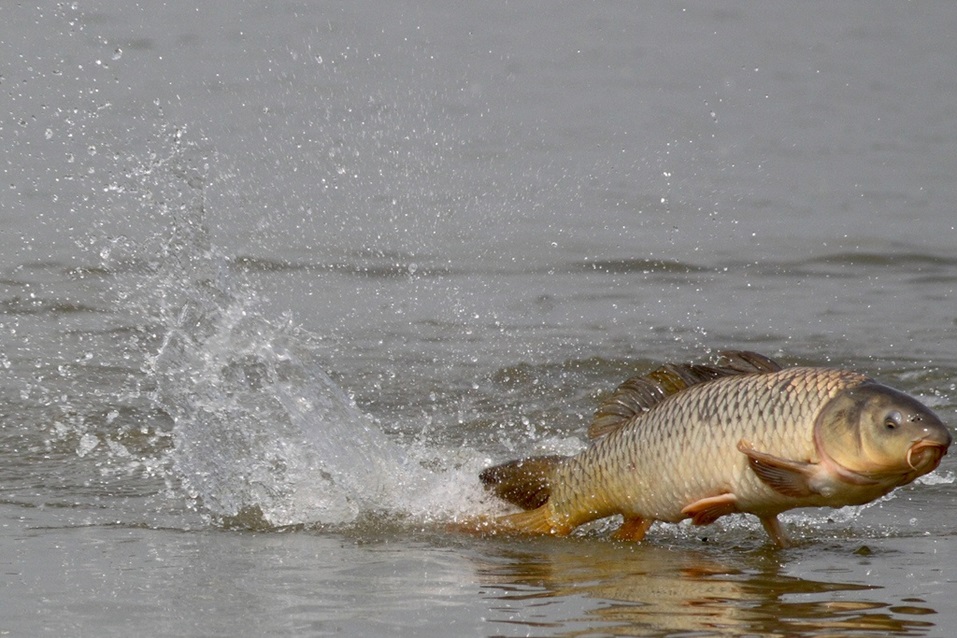Reducing Australia’s carp invasion CSIRO scientists are undertaking rigorous tests to determine the safety and suitability of the candidate biocontrol agent — Cyprinid herpesvirus 3 — (CyHV-3) in managing European carp numbers in Australia.
The challenge
European carp – an invasive species of Australian waterways Enlarge image
Enlarge image
A European carp. Image: Dirk-Jan Kraan/Flickr
European carp (Cyprinus carpio) is a pest that adversely affects the health of our rivers and wetlands. It was first introduced to Australian waterways more than 100 years ago and has since established in every state except the Northern Territory. Able to tolerate a wide range of conditions and habitats, including low-oxygen and brackish water, it is considered one of the country’s major aquatic pests since it massively spread through the Murray-Darling Basin in the late 1980s. Previously held in check by the drought, recent years of flooding rains have brought our river systems back to life, and as a result the carp population has again expanded. This puts increasing pressure on our waterways and native wildlife.
Our response
Curbing carp numbers
A recently identified candidate biological control agent may one day keep carp numbers in check. Our scientists are currently investigating a highly specific viral disease called cyprinid herpesvirus-3, also known as koi herpesvirus (KHV), to help manage carp numbers in Australia. The virus first appeared in Israel in 1998, and spread rapidly throughout much of the world, although not to Australia or New Zealand. It causes high death rates in common carp and in the ornamental koi carp. No other species of fish, including goldfish, are known to be affected by the virus.
We are undertaking our research within the world’s most sophisticated high containment facility – the CSIRO Australian Animal Health Laboratory, where we are performing rigorous tests to determine the safety and suitability of the virus for controlling carp.
The results
Carp herpesvirus could stem the tide
We have identified that CyHV-3 does kill Australian pest carps, and it kills them quickly. Current research has also shown that the virus does not develop in native Australian or any other introduced species of fish.
Over the next few years we’ll continue to test the susceptibility of other fish and amphibian species to CyHV-3 and address questions regarding the safety of possible widespread distribution of the virus, both for people and other animal species.
This research is part of the Australian Government funded National Carp Control Plan , which is using scientific research and community consultation to inform evidence-based decision making on future carp control in Australia.
Source: https://www.csiro.au/
carp herpes australia
carp herpes release
carp virus release
Passionate about fish keeping since elementary school in the 1980s, Giovanni Carlo has dedicated countless hours to collecting and breeding a diverse array of ornamental freshwater fish. From vibrant guppies and majestic koi to striking bettas and classic goldfish, he continues to explore the fascinating world of aquatics, sharing knowledge and enthusiasm with fellow fish enthusiasts.